Friedreich ataxia: molecular mechanisms, redox considerations, and therapeutic opportunities
- PMID: 20156111
- PMCID: PMC2924788
- DOI: 10.1089/ars.2009.3015
Friedreich ataxia: molecular mechanisms, redox considerations, and therapeutic opportunities
Abstract
Mitochondrial dysfunction and oxidative damage are at the origin of numerous neurodegenerative diseases like Friedreich ataxia and Alzheimer and Parkinson diseases. Friedreich ataxia (FRDA) is the most common hereditary ataxia, with one individual affected in 50,000. This disease is characterized by progressive degeneration of the central and peripheral nervous systems, cardiomyopathy, and increased incidence of diabetes mellitus. FRDA is caused by a dynamic mutation, a GAA trinucleotide repeat expansion, in the first intron of the FXN gene. Fewer than 5% of the patients are heterozygous and carry point mutations in the other allele. The molecular consequences of the GAA triplet expansion is transcription silencing and reduced expression of the encoded mitochondrial protein, frataxin. The precise cellular role of frataxin is not known; however, it is clear now that several mitochondrial functions are not performed correctly in patient cells. The affected functions include respiration, iron-sulfur cluster assembly, iron homeostasis, and maintenance of the redox status. This review highlights the molecular mechanisms that underlie the disease phenotypes and the different hypothesis about the function of frataxin. In addition, we present an overview of the most recent therapeutic approaches for this severe disease that actually has no efficient treatment.
Figures









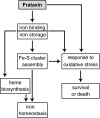


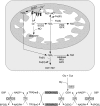
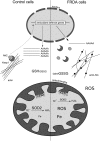
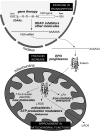
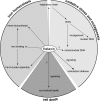
Similar articles
-
Missense mutations linked to friedreich ataxia have different but synergistic effects on mitochondrial frataxin isoforms.J Biol Chem. 2013 Feb 8;288(6):4116-27. doi: 10.1074/jbc.M112.435263. Epub 2012 Dec 26. J Biol Chem. 2013. PMID: 23269675 Free PMC article.
-
Friedreich Ataxia: From the Eye of a Molecular Biologist.Neurologist. 2015 Sep;20(3):51-5. doi: 10.1097/NRL.0000000000000054. Neurologist. 2015. PMID: 26375377 Review.
-
Exenatide induces frataxin expression and improves mitochondrial function in Friedreich ataxia.JCI Insight. 2020 Jan 30;5(2):e134221. doi: 10.1172/jci.insight.134221. JCI Insight. 2020. PMID: 31877117 Free PMC article.
-
Molecular Mechanisms and Therapeutics for the GAA·TTC Expansion Disease Friedreich Ataxia.Neurotherapeutics. 2019 Oct;16(4):1032-1049. doi: 10.1007/s13311-019-00764-x. Neurotherapeutics. 2019. PMID: 31317428 Free PMC article. Review.
-
Neurodegeneration in Friedreich's ataxia: from defective frataxin to oxidative stress.Oxid Med Cell Longev. 2013;2013:487534. doi: 10.1155/2013/487534. Epub 2013 Jul 9. Oxid Med Cell Longev. 2013. PMID: 23936609 Free PMC article. Review.
Cited by
-
Mechanisms of altered redox regulation in neurodegenerative diseases--focus on S--glutathionylation.Antioxid Redox Signal. 2012 Mar 15;16(6):543-66. doi: 10.1089/ars.2011.4119. Epub 2012 Jan 6. Antioxid Redox Signal. 2012. PMID: 22066468 Free PMC article. Review.
-
Frataxin Deficiency Promotes Excess Microglial DNA Damage and Inflammation that Is Rescued by PJ34.PLoS One. 2016 Mar 8;11(3):e0151026. doi: 10.1371/journal.pone.0151026. eCollection 2016. PLoS One. 2016. PMID: 26954031 Free PMC article.
-
A Yeast/Drosophila Screen to Identify New Compounds Overcoming Frataxin Deficiency.Oxid Med Cell Longev. 2015;2015:565140. doi: 10.1155/2015/565140. Epub 2015 Oct 11. Oxid Med Cell Longev. 2015. PMID: 26523199 Free PMC article.
-
Targeted Treatment Strategies for Mitochondria Dysfunction: Correlation with Neurological Disorders.Curr Drug Targets. 2024;25(10):683-699. doi: 10.2174/0113894501303824240604103732. Curr Drug Targets. 2024. PMID: 38910425 Review.
-
Spinocerebellar Ataxia Type 2 Is Associated with the Extracellular Loss of Superoxide Dismutase but Not Catalase Activity.Front Neurol. 2017 Jun 13;8:276. doi: 10.3389/fneur.2017.00276. eCollection 2017. Front Neurol. 2017. PMID: 28659860 Free PMC article.
References
-
- Acquaviva F. Castaldo I. Filla A. Giacchetti M. Marmolino D. Monticelli A. Pinelli M. Saccà F. Cocozza S. Recombinant human erythropoietin increases frataxin protein expression without increasing mRNA expression. Cerebellum. 2008;7:360–365. - PubMed
-
- Acquaviva F. De Biase I. Nezi L. Ruggiero G. Tatangelo F. Pisano C. Monticelli A. Garbi C. Acquaviva AM. Cocozza S. Extra-mitochondrial localisation of frataxin and its association with IscU1 during enterocyte-like differentiation of the human colon adenocarcinoma cell line Caco-2. J Cell Sci. 2005;118:3917–3924. - PubMed
-
- Adinolfi S. Iannuzzi C. Prischi F. Pastore C. Iametti S. Martin SR. Bonomi F. Pastore A. Bacterial frataxin CyaY is the gatekeeper of iron-sulfur cluster formation catalyzed by IscS. Nat Struct Mol Biol. 2009;16:390–396. - PubMed
Publication types
MeSH terms
Substances
LinkOut - more resources
Full Text Sources
Other Literature Sources
Medical
Miscellaneous
